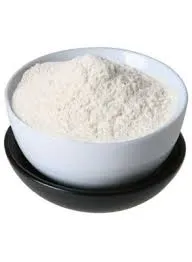
Dec . 09, 2024 18:24 Back to list
HPMC Viscosity Tables and Their Applications in Various Industries
Understanding HPMC Viscosity and Its Applications
Hydroxypropyl methylcellulose (HPMC) is a versatile and widely used cellulose ether that plays a crucial role in various industries, particularly in pharmaceuticals, food, cosmetics, and construction. One of the most significant properties of HPMC is its viscosity, which is influenced by its molecular weight, concentration, and the degree of substitution. Understanding HPMC viscosity is essential for formulators to achieve the desired consistency, stability, and performance of their products.
Characteristics of HPMC Viscosity
HPMC is known for its ability to form gel-like solutions when mixed with water. The viscosity of HPMC solutions can greatly vary, typically measured in centipoise (cP). Higher viscosity grades of HPMC can create thicker solutions, which are ideal for applications requiring enhanced texture and performance. For instance, in pharmaceutical formulations, high-viscosity grades can improve the suspension of active ingredients, thereby affecting release rates and overall bioavailability.
The viscosity of HPMC solutions is significantly affected by temperature and shear rates. As temperature increases, viscosity decreases, a behavior known as shear-thinning. This property is particularly beneficial in manufacturing processes where ease of handling and application is essential. Conveniently, HPMC solutions become less viscous under shear stress, making them easier to pump and apply, then returning to higher viscosity once the stress is removed.
Applications in Various Industries
1. Pharmaceuticals In the pharmaceutical industry, HPMC is often utilized as a binder, thickener, and film-forming agent in tablet formulations and coatings. Its ability to modulate the release profile of drugs makes it a popular choice for extended-release formulations. The appropriate viscosity grade is essential for achieving the desired dissolution characteristics, which can impact therapeutic efficacy significantly.
2. Food Industry HPMC is used as a food additive, particularly in gluten-free and low-fat products, where it mimics the texture and binding qualities of gluten. It acts as a thickening agent, stabilizer, and emulsifier, helping to maintain product consistency and improve mouthfeel. The viscosity of HPMC in food applications is crucial, as it influences texture, mouthfeel, and overall palatability.
hpmc viscosity table

3. Cosmetics In cosmetics, HPMC is frequently included in formulations for lotions, creams, and gels due to its thickening and stabilizing properties. The viscosity of HPMC plays a vital role in creating the desired feel and appearance of these products while enhancing their stability over time. It also helps in achieving a smooth application and controlled release of active ingredients.
4. Construction In the construction industry, HPMC is utilized in tile adhesives, paints, and plaster. Its viscosity characteristics contribute to improved workability and adhesion properties. The right viscosity ensures that the materials maintain their consistency during application and setting, providing an excellent final result.
Selecting the Right Viscosity Grade
When formulating products with HPMC, selecting the correct viscosity grade is crucial. For pharmaceutical applications, formulators often choose grades that provide the right balance between viscosity and flow properties to achieve uniform mixing and optimal release rates. In food products, the viscosity must also ensure that the final product meets sensory and stability requirements.
In general, viscosity tables for HPMC provide valuable information about different grades and their corresponding applications. For example, low viscosity grades are typically used in applications requiring easy flow and spreadability, while high viscosity grades are suitable for products needing structural integrity and stability.
Conclusion
In summary, HPMC is a versatile material whose viscosity significantly impacts its performance across various industries. Understanding the relationship between HPMC viscosity and its applications enables formulators to design products that meet specific functional and sensory requirements. Whether in pharmaceuticals, food production, cosmetics, or construction, selecting the right viscosity grade is a key factor in achieving optimal performance and customer satisfaction. As research continues to advance, the potential applications and benefits of HPMC in various formulations will likely expand, highlighting its importance in modern manufacturing and product development.
-
Versatile Hpmc Uses in Different Industries
NewsJun.19,2025
-
Redispersible Powder's Role in Enhancing Durability of Construction Products
NewsJun.19,2025
-
Hydroxyethyl Cellulose Applications Driving Green Industrial Processes
NewsJun.19,2025
-
Exploring Different Redispersible Polymer Powder
NewsJun.19,2025
-
Choosing the Right Mortar Bonding Agent
NewsJun.19,2025
-
Applications and Significance of China Hpmc in Modern Industries
NewsJun.19,2025







